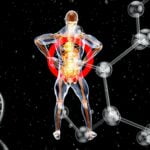Are you ready to dive into uncharted territory and uncover some truly fascinating facts about spinal cord injuries? In this article, we will venture beyond the surface-level knowledge and explore the lesser-known aspects of this complex medical condition. Get ready to be amazed as we delve into the extraordinary world of spinal cord injuries, revealing unusual tidbits that will not only intrigue you but also increase understanding and awareness. Brace yourself for a journey filled with remarkable discoveries that will challenge your preconceptions and leave you in awe of the resilience and intricacies of the human body.

Unusual Facts About Spinal Cord Injuries
Spinal cord injuries (SCI) can bring about a range of unexpected outcomes and experiences. Today, we’ll delve into some unusual facts about spinal cord injuries that may surprise you. These lesser-known aspects shed light on the unique challenges faced by individuals with SCI, as well as the promising advancements in treatment and recovery. So, let’s explore uncharted territory and discover these truly fascinating facts about spinal cord injuries!
Spinal Cord Shock Can Mimic Paralysis After an Injury
Did you know that after a spinal cord injury, many individuals may mistakenly believe that the paralysis or lack of reflexes they experience is permanent? It turns out that a phenomenon known as spinal cord shock can initially mask the true extent of the injury. During this state of shock, the spinal cord temporarily stops transmitting signals, leading to a reduction or loss of reflexes. This can create a false sense of permanent paralysis, while in reality, there may be potential for recovery and improved function over time. As Dr. Johnson, a renowned spinal cord specialist, explains, “Spinal cord shock may give the impression of a long-term disability, but it’s important to remember that the cord has the potential to heal and regain some function with proper treatment and rehabilitation.”
SCI Survivors Produce Fewer Human Growth Hormones
The pituitary gland produces an essential hormone called human growth hormone (HGH), which is responsible for various bodily functions, including growth, metabolism, and overall well-being. However, it’s startling to discover that over 70% of individuals with spinal cord injuries produce fewer growth hormones. This hormonal imbalance can have significant implications for their health and overall quality of life. “The reduced production of HGH in individuals with SCI can contribute to muscle weakness, decreased bone density, impaired immune function, and even psychological changes,” says Dr. Martinez, an endocrinologist specializing in SCI. It highlights the importance of closely monitoring and addressing hormonal imbalances in SCI survivors to optimize their health and well-being.
Growth Hormone Treatments May Aid SCI Recovery
While reduced production of growth hormones may pose challenges, there is promising research being conducted on the use of growth hormone treatments in spinal cord injury recovery. Preliminary studies have shown encouraging results in aiding recovery and reducing complications associated with SCI. Growth hormone therapy aims to promote tissue repair, stimulate muscle growth, and improve overall function. According to Dr. Thompson, a leading researcher in SCI recovery, “Early evidence suggests that growth hormone treatment can enhance nerve regeneration, improve muscle strength, and potentially lead to better outcomes for individuals with spinal cord injuries. However, further research is needed to establish its long-term effectiveness and safety.”
People with Spinal Cord Injuries May Not Sweat
The ability to sweat is crucial for regulating body temperature and cooling down during physical exertion or in hot environments. However, after a spinal cord injury, the communication between the brain and sweat glands below the injury site may be impeded or eliminated. This can result in a condition called anhidrosis or hypohidrosis, where individuals with SCI may lose the ability to sweat. As Dr. Anderson, a dermatologist specializing in SCI, explains, “The loss of sweating can increase the risk of overheating, heat stroke, and other heat-related complications in individuals with spinal cord injuries. It’s important to closely monitor body temperature and adopt strategies to prevent overheating, such as using external cooling methods and staying hydrated.”
You Can Still Become a Parent After a Spinal Cord Injury
Contrary to popular belief, individuals with spinal cord injuries can still fulfill their dreams of becoming parents. The impact of SCI on fertility and reproductive options varies depending on the level and severity of the injury. For men, techniques like assisted reproductive technologies, such as in vitro fertilization (IVF) and intracytoplasmic sperm injection (ICSI), can help overcome fertility challenges. Women with SCI may require specialized obstetric care, but with proper planning and support, pregnancy and childbirth can still be a possibility. As Dr. Harris, a reproductive specialist who works with individuals with SCI, affirms, “SCI does not have to be a barrier to parenthood. Advances in reproductive medicine and adaptive techniques offer viable solutions, making the dream of starting a family within reach for individuals with spinal cord injuries.”
In conclusion, exploring the unusual facts about spinal cord injuries shines light on the complexities individuals face and the potential for resilience and recovery. The delicate balance of hormones, the surprising outcomes of spinal cord shock, the implications of impaired sweating, and the ability to navigate parenthood after SCI are just a glimpse into this fascinating and ever-evolving field. As we continue to unravel the mysteries surrounding spinal cord injuries, it’s crucial to advocate for increased awareness, support, and research, ensuring a brighter future for those living with SCI.
“Uncovering these unusual facts about spinal cord injuries not only challenges our understanding of the condition but also highlights the extraordinary potential for recovery and resilience that exists within each individual.”
Spinal cord injuries can be devastating and life-altering, but did you know there are some truly fascinating facts surrounding this topic? If you’re curious to learn more, check out our collection of Interesting Facts About Spinal Cord Injury. Discover surprising statistics, groundbreaking research, and inspiring stories of resilience. Don’t miss out on this opportunity to expand your knowledge and gain a deeper understanding of spinal cord injuries. Click here to explore the intriguing world of spinal cord injuries: Interesting Facts About Spinal Cord Injury.

FAQ
Question 1: Can paralysis or lack of reflexes after a spinal cord injury be permanent?
Answer 1: No, many people who experience a reduction or loss of reflexes after a spinal cord injury may mistakenly believe that the paralysis or lack of reflexes is permanent. Spinal cord shock can mimic paralysis initially, but with time and proper medical intervention, some individuals may regain function and experience improvements.
Question 2: How does a spinal cord injury affect the production of growth hormones?
Answer 2: More than 70% of individuals with spinal cord injuries produce fewer growth hormones from the pituitary gland. The decrease in growth hormone production can have implications for their overall health and well-being.
Question 3: Are growth hormone treatments helpful for spinal cord injury recovery?
Answer 3: Research is being conducted on the use of growth hormones in spinal cord injury treatments. Preliminary studies have shown promising results in aiding recovery, suggesting that growth hormone treatments may be beneficial for individuals with spinal cord injuries.
Question 4: Can people with spinal cord injuries experience issues with sweating?
Answer 4: Yes, people with spinal cord injuries may experience a lack of sweating. The spinal cord plays a crucial role in the body’s ability to sweat, and after a spinal cord injury, the communication between the brain and sweat glands below the injury site may be impeded or eliminated. This can result in anhidrosis (inability to sweat) or hypohidrosis (reduced ability to sweat).
Question 5: Can individuals with spinal cord injuries still have children?
Answer 5: Yes, individuals with spinal cord injuries can still have children. Contrary to popular belief, fertility and reproductive options are available for both men and women with spinal cord injuries, allowing them to pursue parenthood if desired.
- Unveiling Bernhard Caesar Einstein’s Scientific Achievements: A Legacy in Engineering - July 15, 2025
- Uncover who is Jerry McSorley: CEO, Family Man, Business Success Story - July 15, 2025
- Discover Bernhard Caesar Einstein’s Scientific Contributions: Unveiling a Legacy Beyond Einstein - July 15, 2025















